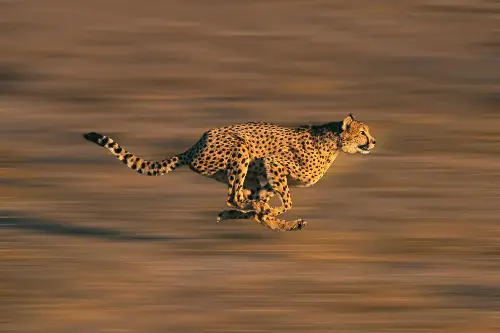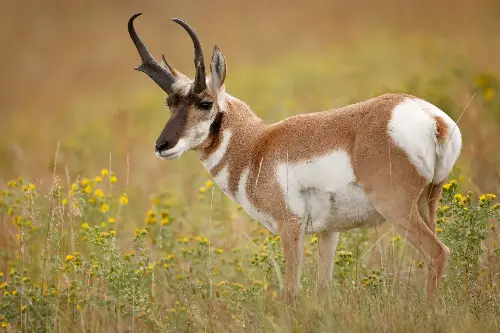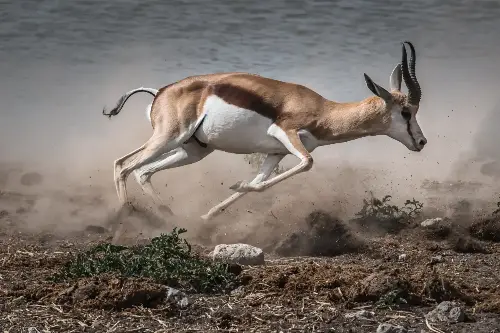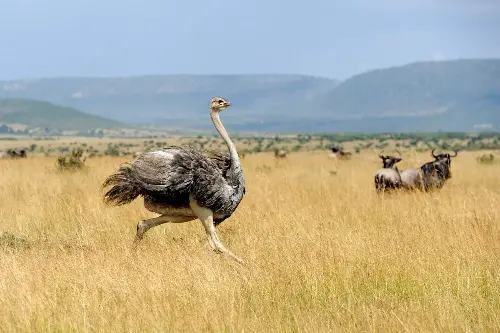In the vast tapestry of the animal kingdom, few spectacles are as breathtaking as the high-speed chase. The planet's quickest land animals blend raw power with graceful agility, functioning as nature's elite athletes. Their biological make-up and survival tactics have fascinated scientists and nature lovers alike for generations. Let's delve into the astonishing world of these remarkable creatures and unveil the secrets behind their incredible speed and agility.
The Cheetah: Nature’s Speed Demon

Encounters with the cheetah, the fastest land animal on Earth, are nothing short of awe-inspiring. Capable of accelerating from 0 to 96 kilometres per hour in just three seconds, their speed rivals that of most sports cars. But it's not just their swiftness that's impressive; cheetahs are also masters of the chase, able to maintain their top speed of about 113 km/h for up to 500 meters. Their slender, aerodynamic bodies, long legs, and semi-retractable claws give them the traction and stride they need to outpace their prey, typically in a blistering short burst. Coupled with an extraordinarily flexible spine that coils and extends like a spring, cheetahs are both rapid and nimble, making them the ultimate sprinters of the savannah.
The Pronghorn: North America’s Swift Sovereign

While cheetahs may hold the crown for speed, the pronghorn antelope, native to North America, is not far behind, with a top speed of around 98 km/h. Remarkably, pronghorns can sustain high speeds for much longer distances than cheetahs, traversing several kilometres before tiring. This endurance is crucial in the wide-open plains of their habitat, where cover is scarce, and they rely on out-running predators in lengthy pursuits. Furthermore, pronghorns are equipped with large, oxygen-rich lungs, and their uniquely structured hooves provide shock absorption and stability at high speeds.
The Springbok: An Agile African Antelope

Smaller in stature but certainly not in spirit, the springbok is another fleet-footed animal that graces the African continent. While their top speeds can reach upwards of 88 km/h, it is their agility that truly sets them apart. Springboks are known for their peculiar locomotion known as "pronking," where they leap up to four metres into the air with a stiff-legged posture. This display is not merely for show; it's believed to confuse predators and display their fitness to potential mates.
The Greyhound: A Domesticated Dash Champion

The greyhound — a breed of dog sculpted by humans for hunting and racing — embodies a special blend of speed and endurance. These canines can sprint at speeds up to 72 km/h, a testament to their lean, muscular build and deep chests that house powerful lungs. Their double-suspension gallop allows all four feet to leave the ground twice in each stride, maximising their push-off power and minimising contact time with the ground, a perfect adaptation for brief, intense chases.
The Ostrich: The Fastest Two-Legged Runner

Turning to the bird kingdom, the ostrich is the peak of avian speed on land. Despite their impressive size — standing up to 2.8 metres tall and weighing up to 160 kilograms — ostriches can bolt at speeds up to 70 km/h. With their powerful, long legs, they can cover 3 to 5 metres in a single stride. Interestingly, they also have a two-toed foot design that reduces weight and provides extra thrust. And while they can't fly, their wings are not redundant; instead, they act as rudders, aiding with balance and manoeuvrability while sprinting and changing direction rapidly.
Interplay of Adaptation and Survival
Behind the undisputed grandeur of the fastest land animals, lie millennia of evolutionary adaptations honed by the relentless pressures of survival. These creatures' ability to dash, dodge, and dart better than their predators or prey is a result of countless generations of natural selection fine-tuning their anatomies and physiologies. Muscle composition, skeletal structure, respiratory capacity, and even fur patterns play a role in their specialisation in speed and agility.
Conservation: The Race Against Extinction
As we marvel at these creatures, we're reminded that their continued existence is under threat from habitat loss, climate change, and human impacts. Conservation efforts must race to keep up with these challenges, ensuring that the cheetah's chase, the pronghorn's trot, and the greyhound's gallop continue to inspire future generations.
In conclusion, the world's fastest land animals are not only marvels of nature's design but also serve as reminders of life's incredible adaptability. From blazing speeds to astounding agility, these species continue to captivate and intrigue, propelling us to appreciate and safeguard the varied and vibrant tapestry of life on our planet. Just as these creatures have adapted to survive, so must we adapt our actions to ensure their survival — not only for the sake of biodiversity but for the wonder they bring into our world.
